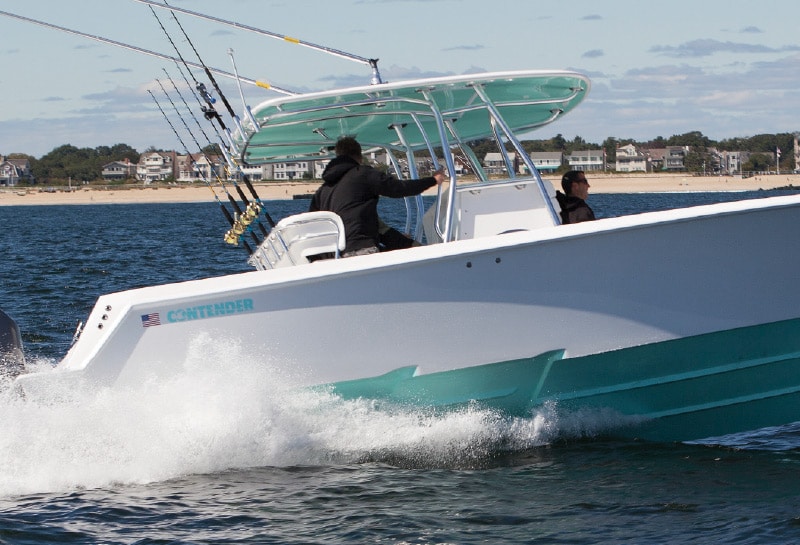

How do traditional Deep-V hull designs compare to their high-speed, stepped hull counterparts?
“The hull design has to suit the purpose of the boat in terms of where and how it will be used and the speed expectations,” says naval architect Lou Codega, who designs the Regulator line, among others. “Outboard powered boats have to run fast in waves yet still get you home when it gets snotty. It’s a lot more complicated than simply choosing a look.”

Speed is not limited by design, but rather by how much discomfort the operator is willing to endure

Deep-V vs. Stepped Hulls
“Deadrise at the bow is more important than the transom because that’s what is doing the work,” he explains. “Strakes come into play by how quickly they taper while downward angles on the forward chines provide a drier, more stable ride. It’s all a trade-off. The characteristics that make a boat go fast hurt sea-keeping. Speed is not limited by design, but rather by how much discomfort the operator is willing to endure. When it gets rough, you’re glad to have a big, heavy boat to slog through seas versus getting tossed around.”
“The characteristics that make a boat go fast hurt sea-keeping.”

Naval Architect behind every Regulator hull design

Carolina Style
With their Edenton, North Carolina roots, Regulator Boats feature a pronounced Carolina bow flare, which Codega says adds style, a drier ride and keeps the bow from stuffing into waves when running the rough inlets common on the Eastern seaboard. Codega utilizes engine brackets extensively and avoids pocket transoms and notched steps in the outside chines.
“Engine brackets move the propellers away from the hull into cleaner, solid water like a notched transom,” he says. “In addition, they add more space to the cockpit, especially with the larger four-stroke outboards. Plus they let me adjust the center of gravity to where I want it. Another benefit is brackets provide more control flexibility with running and static trim.”
Perry says Albemarle listens to dealers and current owners for real world feedback when developing new models. Designs focus on a deep forefront deadrise that is reduced aft for a soft, predictable ride.

A Positive Advantage
Donald Blount and Associates design Jupiter Marine models, with considerable input from industry legend and company president Carl Herndon. The Palmetto, Florida-based builder produces nine models, including the latest introduction, the 43 Sportfish. With the exception of the 25-foot bay, all utilize the company’s signature Posi-Stern hull design. This flattened pad on the aft centerline keel has been a constant feature throughout Jupiter’s 30-year history.
“[The Hull Pad] provides dynamic lift, higher running speeds and increased fuel economy.”
(as seen on Jupiter 43)


Hydrodynamics pertains to the forces in, or motions of, liquids. A well-executed hull design, regardless of brand, enables those forces to match briny liquids for a safe and comfortable return to the dock when those white-capped liquids build to six-footers and you’re 40 miles offshore.

Traditional Deep-V
- Slower and less efficient than comparable stepped hull designs.
- Time-to-plane and bow rise during hole shot is more pronounced than in stepped hulls.
- Decades of proven performance and handling with many new refinements.
- Less expensive than stepped counterparts.
- A bunk or roll-on trailer can be used for transport. Bottom maintenance is easier with less surface area and crevices for bottom growth to occur.
- Are more conventional designers playing it safe with proven deep-V “smooth” hull forms?
Stepped Hulls
- Provide greater speed and efficiency with the same horsepower rating of a comparable deep-V hulls.
- On-plane sooner and exhibit less overall bow rise than traditional hulls. Minimal trim required through RPM range.
- Early attempts plagued with poor handling characteristics, but newer designs are much improved.
- Higher price premium due to complexities of glass layup and necessity for increased testing.
- Trailering, lifts and launch become more complex to protect the steps from damage. Stepped hulls cannot use a roll-on trailer and have more crevices to keep clean.
- Some builds aren’t stepped, just notched. Meticulous design of step placement and center of gravity is essential.